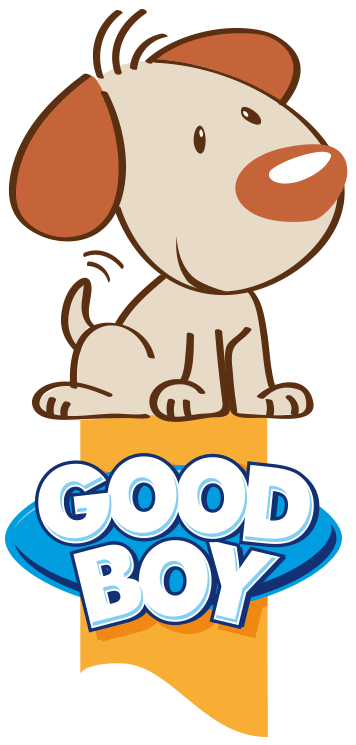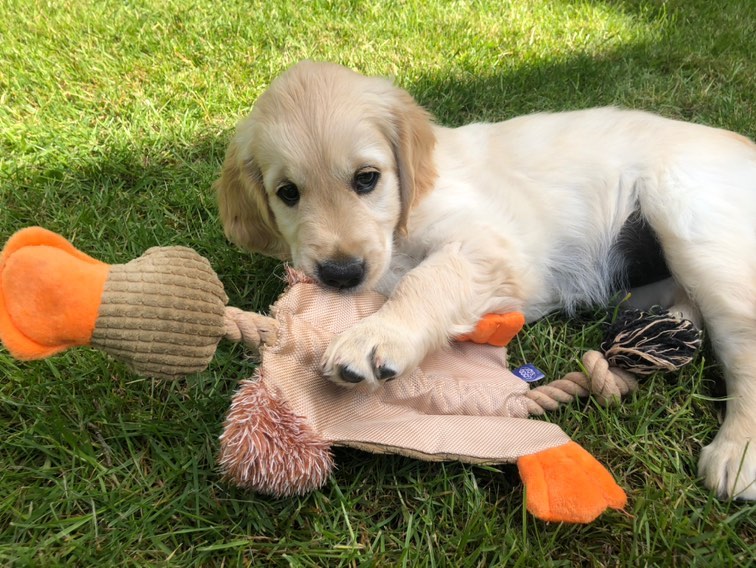You’ve got a new furry best friend and they’re as cute as a button, but those pearly white canine teeth can be very sharp, and pups sure do like to explore things with their mouths. Fortunately, we’ve got a few tips on how to stop your puppy from biting.
Until now, your little pupper will have been playing with his litter-mates, and that sort of play often involves the odd nip. As your new sidekick grows, he needs to learn not to treat you like a puppy chew toy. Fortunately for you (and your fingers) it’s quite a simple process.
Remember, there’s a big difference between a nip during playtime and a proper bite. Unless your doggo is very scared or in pain, you can safely assume they don’t mean any harm. Shiny new teeth can have sharper edges than those of an older dog, so it doesn’t take much pressure for them to break the skin. Here’s how to stop a puppy from biting!
How to train a puppy to stop biting me
A good way of training any doggo is to find out what is motivating the behaviour. What is she trying to achieve when she does the thing you don’t like? So, why do puppies nip? Fortunately, it’s easy to work out – it’s because they are trying to have fun and keep your attention. That’s how pups play with each other, so they don’t know you don’t like it.
So, how do we use that information to train Fido not to nip? Simple: nipping means playtime stops. Here’s the step-by-step guide to nipping nipping in the bud!
- Initiate playtime with your pup, either with dog chew toys or however you usually play.
- When your pup is playing nicely, keep playing and praising them.
- If your pup nips your hand – even if it’s an accident – stop playing, remove the toy (if you used one) and turn away from her. That’s the end of playtime, cutesy talking and fun interaction. You can also give a high-pitched ‘yelp’ or say ‘ouch’ when you get nipped, to help them identify what the problem is.
- Re-visit playtime again when your canine companion has stopped trying to get you to re-engage with them (or later in the day, if you want a break).
- Repeat! Remember, lots of praise for playing nicely.
🐾Top tip: even if you don’t mind playing ‘bitey hand’ with your pup, it’s safest to train them to play gently. You never know when an unsuspecting kid (or adult!) might accidentally initiate a game with them and get more than they bargained for!
It sounds simple, because it is; what could go wrong? Here are some things to avoid:
- Don’t scold your puppy for nipping – they think it’s part of the game! Harsh words don’t help doggos learn, so there’s no benefit to telling them off. Just withdraw the attention and you’ll see results.
- Don’t goad your pupster into rough play our mouthing just to teach them about nipping, as it may confuse them. Wait until the behaviour arises naturally – and let’s face it, it probably will!
- Don’t wag your finger at your fluffy friend! It’s such a human response to unwanted behaviour, but all they see is a little bit of the person they love waving tantalisingly in front of their face.
🐾Top tip: make sure everyone in your household applies these rules and practices to training. Puppies thrive on consistency, and sometimes all it takes is one person to undo your hard work!
How to train a puppy to take treats gently
Separate to playtime, puppers can get a bit ‘toothsome’ when they are excited about treats. The approach to this is a little different, but equally simple!
Using the same thought process as above: what is your canine companion trying to achieve? Well, he wants the treato, please! He uses his mouth to try to get at it, but he needs to learn that it doesn’t quite work like that. Patience is a virtue, after all!
- Hold a treat in your hand, concealed by your fingers.
- Hold your hand in front of your fluffy friend to get their interest.
- If the pup tries to extract the treat by licking, mouthing or pawing, don’t let them take it from you – however persuasive those beautiful puppy-dog eyes are.
- The moment your pup stops trying and moves their mouth away from your hand – praise and treat!
🐾Top tip: Get different people to practise the same thing, or your pupper may think it’s okay to gnash on some peoples’ hands, just not yours!
How to train a puppy to stop chewing things
This is again a very separate thing to the two lessons above, so don’t try to cram it all in at once. If you want to train your puppy (or adult doggo!) not to chew things that aren’t theirs, there’s a bit more to it. That’s because chewing releases a calming hormone in dogs. Some puppies chew to soothe themselves when they’re stressed – others just do it for fun, and because it’s a super natural behaviour. And of course, puppies can be teething up to around eight months old, which can induce lots of chewing!
The first step is to pick up some puppy chew toys that are suitable for the age bracket your pup is in. Pay attention to their size, too, as some may be more suitable for tiny mouths or giant breeds.
🐾Top tip: Remember, even if they look like tug toys, puppies shouldn’t play tug games until their adult teeth have all come through.
Try to keep everything you don’t want your pupper to chew out of their reach, and present them with any new toy so they know it’s a special treat just for them. When they chew their toys, give a little praise – no need to go crazy, but help them understand that they’re doing an okay thing. Then, if you catch them with something they aren’t allowed, simply tell them ‘no’, give them one of their own toys, and praise them when they turn their attention to that instead!
🐾Top tip: Don’t yell at your puppy for chewing the wrong thing, even if you’re sure they know the difference between your shoes and their own toy! Sometimes, puppies like to chew things that smell like their owners for comfort, and they really aren’t able to process harsh scolding in a productive way. Of course, some materials (like leather and wood) are naturally appealing to pupsters. Just remove the item, clean up without a word and give them their own toy.
At a young age, pups love to learn and the best way to do that is by interacting with you and their surroundings. They’re naturally inclined to do that with their mouths, but now you know how to stop a puppy from biting, so you can focus on their cute button noses instead of their needle-like nipping puppy teeth. Happy playtime!



